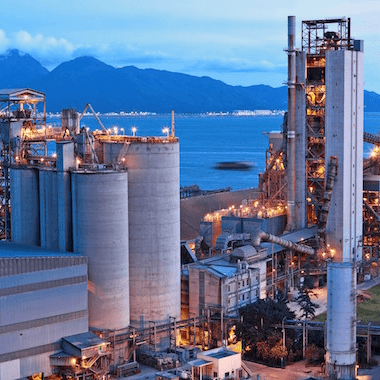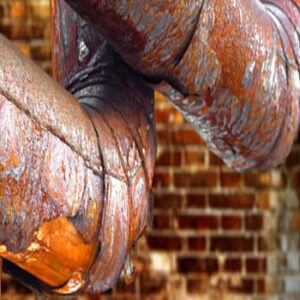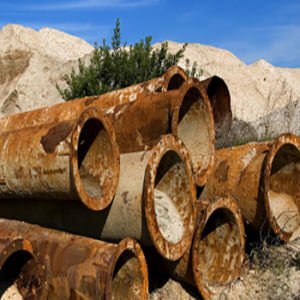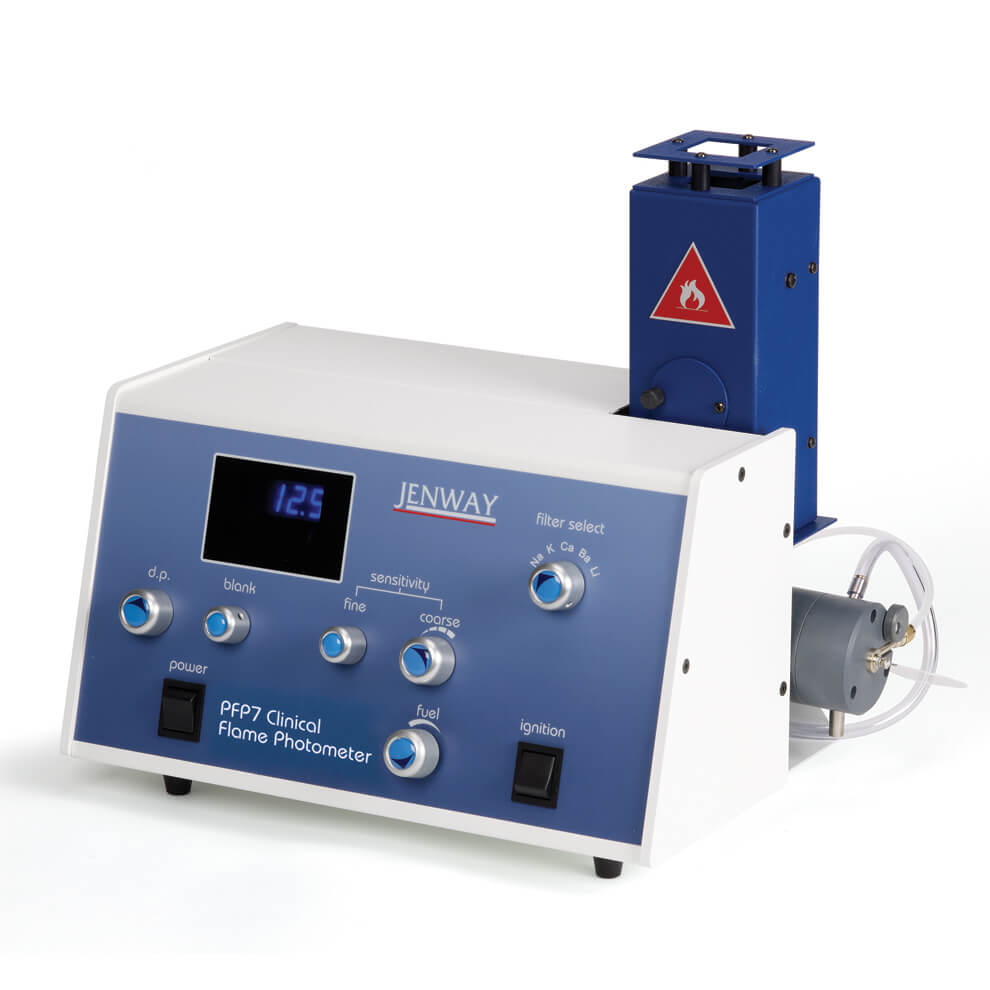

2.4.1 Cement Manufacture Processes
(i) General Description
The process of manufacturing cement (shown in Figure 2-2) requires the following three stages:
Raw material preparation: grinding a mixture of raw materials to make a ‘raw mix’.
Clinker burning (Pyro-processing): heating the raw mix to a sintering temperature of >1400°C in a cement kiln to produce ‘clinker’.
Cement preparation: grinding the resulting clinker with gypsum and other additives to make cement.
Figure 2-2: Simplified Cement Making Process Schematic
Images
The most common raw materials used for cement manufacture are limestone, marls and clay (although others can be used). The selected materials are crushed, ground and mixed to produce a raw mix of suitable composition and form for pyro-processing. Approximately 1.50-1.60 t of (dry) raw mix are required to produce 1 t of clinker, due to the calcination of the limestone component of the raw mix.
The second stage in the process involves feeding the raw mix into a kiln system where it is gradually heated. Successive chemical reactions take place as the temperature of the raw mix rises. These reaction stages are shown in Table 2-3.
Table 2-3: Kiln Chemical Reactions (CEMBUREAU, 1999)
| Kiln temperature (°C) | Chemical reaction
|
| 20 – 900 | Drying and Preheating: the release of free and chemically bound water |
| 850 – 950 | Calcination: the release of CO2 from calcium carbonate (limestone) and initial reactions with formation of clinker minerals and intermediate phases |
| 1250 – 1450 | Sintering or clinkerisation: the formation of calcium silicates and partial melting |
| 1350 – 1200 | Kiln internal cooling: crystallisation of calcium aluminate and calcium ferrite from the partial melt |
Typically, a peak temperature of 1400-1450 °C is required to complete the reactions and produce alite, the characteristic constituent of Portland cement. Partial melting causes the material to aggregate into lumps or nodules known as clinker which is then cooled with air to 100-200°C. Waste heat from the kiln system is usually used for drying the raw materials in the raw grinding section of the production process. A typical cement clinker consists of the compounds shown in Table 2-4.
Table 2-4: Typical Composition of Cement Clinker (IEA GHG, 1999)
| Compound | Chemical formula | Min | Content (%)Average | Max |
| Tricalcium silicate (Alite) | 3 CaO.SiO2 | 45 | 62 | 75 |
| Dicalcium silicate (Belite) | 2 CaO.SiO2 | 5 | 15 | 35 |
| Calcium aluminoferrite (Ferrite) | 4 CaO.Al2O3. FeO3 | 4 | 8 | 15 |
| Tricalcium aluminate (Aluminate) | 3 CaO.Al2O3 | 4 | 11 | 15 |
| Free Calcium oxide | CaO | 0.1 | 1 | 4 |
| Free Magnesium oxide | MgO | 0.5 | 1.5 | 4.5 |
Figure 2-3 shows an electron microscope image of a (polished) clinker nodule. Most of the nodule is comprised of alite (light grey) and some clusters of belite are visible (arrowed). Aluminate and ferrite are present but not visible at this relatively low magnification.
Figure 2-3: Magnification of a Clinker Nodule (Understanding Cement, 2007)
The final stage in the manufacturing process involves grinding clinker with additives, such as gypsum, limestone, granulated blast furnace slag and fly ash, to control the properties of the cement.
(ii) The Four ‘Integrated Plant’ Process Routes
The three manufacturing stages previously mentioned are common to four main ‘integrated plant’ process routes by which cement can be produced. These process routes are distinguished by the moisture content of the feed going into the kiln and are known as follows:
- Wet process: raw materials are ground in water to form a slurry which is either fed directly into the kiln or first to a slurry drier.
- Semi-wet process: raw slurry is first dewatered in filter presses and the filter cake extruded into pellets and fed either to a grate preheater or directly to a filter cake drier for raw mix production.
- Semi-dry: dry raw mix is pelletised with water and fed into a grate preheater before the kiln or to a long kiln equipped with chains and crosses to facilitate the heat exchange between the kiln feed and the combustion gases.
- Dry process: raw materials are ground and dried to form a dry raw mix in the form of a flowable powder. The dry raw mix is fed into the preheater or precalciner kiln, or more rarely to a long dry kiln.
Each process requires a slightly modified approach and use of equipment in the first two of the three manufacturing stages, i.e. the raw grinding and pyroprocessing stages. These differences are reviewed in the sections below.
Historically, the clinker manufacturing process has evolved from ‘wet’ to ‘dry’ systems with the intermediate steps of the ‘semi-wet’ and ‘semi-dry’ process routes. The first rotary kilns, introduced around 1895, were long wet kilns (CEMBUREAU, 1999). ‘Wet’ kilns allowed for easier blending and homogenisation of raw materials. However, as technology developed it became possible to produce a homogenous raw mix using the dry process. The ‘dry’ production process requires less energy and so has lower fuel costs than the wet process and thus is generally favoured where its application is feasible.
Wet Process
In the wet process the preparation of the raw mix is achieved by grinding the dry raw materials with water in wash mills, or ball mills with rubber linings. The resultant slurry is mixed in slurry basins where compressed air is introduced and the slurry is continuously stirred to produce a slurry of consistent composition.
In the conventional wet process this thick liquid slurry, which may have water content of 30-40%, is fed directly into the kiln where the water is evaporated in the drying zone at the kiln inlet. This drying zone is fitted with curtains of chains which promote heat exchange between the slurry and the exhaust gases from the combustion of fuel in the kiln passing counter-current with the slurry feed up the kiln. After passing through the drying zone the raw material moves down the kiln through the preheating zone to be calcined and finally burnt to clinker in the sintering zone. Conventional wet kiln technology has a high heat consumption and produces large volumes of exhaust gases. In more modern wet kiln systems water is driven off the raw slurry prior to entering the kiln in a slurry drier. Slurry “thinning” chemicals may be added to allow the slurry to be pumped to the kiln with lower water content. These more modern wet kiln systems have lower specific heat consumption compared to conventional wet kilns.
In this process the fuel consumption is the highest (in the region of 5000 to 7000 kJ/kg of clinker) but the power consumption is typically lower at 110-115 kWh/tonne of cement (Chemical Universe, 2007).
Semi-wet Process
As in the wet process the raw mix used in the semi-wet process is prepared as a slurry. Unlike the wet process the slurry is then dried in crusher-dryer before being delivered to a preheater for preheating, calcination and clinker formation in the rotary section of the kiln.
The fuel consumption of the semi-dry and semi-wet process is about 3500-5000 kJ/kg of clinker. The power consumption is typically in the range 115-120 kWh/tonne of cement (Chemical Universe, 2007).
Semi-dry Process
In the semi-dry process a dry-powder raw mix is made into pellets in a nodulizing pan with the addition of 10-13% water. The pellets are loaded onto a grate preheater which dries, preheats and partially calcines the raw mix. The pellets then drop into the kiln for completion of the calcination and combination into clinker.
If the semi-dry process is used kiln exhaust gases cannot be utilised in the raw mix drying and grinding process due to their lower temperature following their prior use. This combined with high grate preheater maintenance costs mean that the semi-dry process is no longer installed in modern cement plants.
The fuel consumption of the semi-dry and semi-wet process is about 3500-5000 kJ/kg of clinker. The power consumption is typically in the range 115-120 kWh/tonne of cement (Chemical Universe, 2007).
Dry process
In the dry process, the raw materials are dried in a combined drying and grinding plant to reduce the moisture content below 1%. The materials are ground in either a ball or a roller mill with drying of the materials being achieved by sweeping the mill with the exhaust gases from the kiln. The drying capacity of the raw grinding system may be supplemented by auxiliary hot air generating furnaces. The dried, finely ground raw mix powder is then blended and homogenised in silos with the mixing being provided by compressed air.
The blended and homogenised raw mix is then usually fed to a gas-suspension preheater ahead of a short rotary kiln. These preheaters consist of successive heat exchanger and collection cyclone stages arranged above one-another in series in a tower. Partial calcination of the raw mix takes place prior to the mix entering the rotary section of the kiln.
Additionally a precalciner can be integrated between the kiln and the suspension preheater which ensures complete calcining of the raw mix before it enters the kiln. Precalciners increase kiln capacity and reduce energy consumption.
Fuel consumption is lowest in this process and is in the range of 2750-4000 kJ/kg of clinker. The power consumption is in the range of 120-125 kWh/tonne of cement (Chemical Universe, 2007). However, the most modern, dry-process cement plants can have power consumption in the range 80-100 kWh/tonne of cement by deployment of compression grinding equipment for raw and finish milling rather than ball mills. Production of blended cements is also widely used to reduce unit electrical energy consumption.



